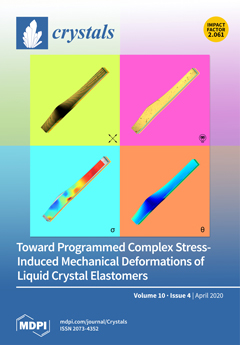[Cu(4,4'-bipyridine)
2(BF
4)
2] (ELM-11), an elastic layer-structured MOF (metal-organic framework), is expected to be a sophisticated CO
2 reservoir candidate because of its high capacity and recovery efficiency for CO
2 sorption. While ELM-11 shows a unique double-step gate
[...] Read more.
[Cu(4,4'-bipyridine)
2(BF
4)
2] (ELM-11), an elastic layer-structured MOF (metal-organic framework), is expected to be a sophisticated CO
2 reservoir candidate because of its high capacity and recovery efficiency for CO
2 sorption. While ELM-11 shows a unique double-step gate sorption for CO
2 gas, the dynamics of the structural transition have not yet been clarified. In this study, the dynamics of the 4,4'-bipyridine linkers and the BF
4- anions were studied by determining
1H spin-lattice relaxation times (
T1). The ELM-11 structural transition accompanying CO
2 sorption was also examined through the CO
2 uptake dependence of the
1H spin–spin relaxation time (
T2), in addition to
T1. In its closed form, the temperature dependence of the
1H
T1 of ELM-11 was analyzed by considering the contributions of both paramagnetic and dipolar relaxations, which revealed the isotropic reorientation of BF
4- and the torsional flipping of the 4,4'-bipyridine moieties. The resultant activation energy of 32 kJ mol
-1 for the isotropic BF
4− reorientation is suggestive of strong (B-F...Cu
2+) interactions between Cu(II) and the F atoms in BF
4−. Furthermore, the CO
2 uptake dependence of
T1 was found to be dominated by competition between the increase in the longitudinal relaxation time of the electron spins and the decrease in the spin density in the unit cell.
Full article





